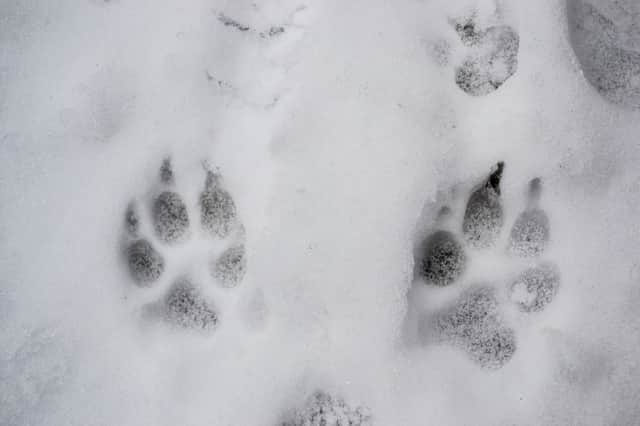Looking After Dog Paws in Winter: Here's how snow and grit can cause harm and how to prevent it


We're only half way through winter and we've aleady had plenty of icy cold weather - making walking the dog trickier than usual.
While we can pop a pair of boots on, our dogs tend to rely on their bare paws to protect them from the cold.
Advertisement
Hide AdAdvertisement
Hide AdAnd there are hidden risks out there, with grit scattered on roads and pavements having the potential to cause burns and sores on your dog's paw pads, along with other complications.
With this in mind, outdoor dog expert Ernie Kucera at Ruffwear has offered his advice on the dangers and how to prevent harm to your dog’s paws.
Grit can cause burns or sores on paw pads
Rock salt is a mixture of salt and grit, and this is what is commonly used to de-ice paths and roads during the winter. However, the rock salt element can be very dangerous to pets. Walking on grit whilst out on your daily adventures can sadly cause burns or sores on paws. This is due to the harshness of the chemicals used in the grit, so if possible, I recommend walking your dog in places where the snow hasn’t been gritted such as a field or park.
Snow and ice can dry out paw pads leading to cracks
It is important to note that snow and ice can dry out your dog's paw pads, causing them to be chapped and potentially crack. This is due to the prolonged time that they spend walking in conditions where their paws are susceptible to the cold. A dog needs a minimum of 30 minutes of exercise per day (depending on the size and breed), and so these 30 minutes where they are walking on the cold snow can cause dry cracked paws. We would recommend testing out dog boots if you find that your dog has particularly sensitive paws during the winter months. They are comfortable and durable and can be a great addition if your dog has any injuries that are preventing them from walking. The boots provide a protective layer to elements such as snow and grit which will reduce the risk of any injury to your dog’s paws this winter.
If grit is ingested, it can be poisonous
Even a very small amount of pure rock salt can be dangerous to your dog if it is ingested. You may notice after walking your dog through grit that once you get home, this may irritate their paws, and they may chew and lick to get the unfamiliar substance off. If they ingest the rock salt, it can unfortunately cause poisoning which can manifest itself in several ways. Some symptoms of poisoning to look out for are:
Unusual sleepiness
Vomiting
Breathing difficulties
Drinking a lot more water, being very thirsty
Seizures
If your dog is displaying these symptoms, contact your vet immediately, as poisoning from rock salt can lead to kidney failure. To help prevent poisoning, it is absolutely vital that you thoroughly wash your dog’s paws and other areas where there may be grit such as their legs and stomach with warm water and their shampoo. Make sure they are as dry as possible afterwards.
Comments
Want to join the conversation? Please or to comment on this article.